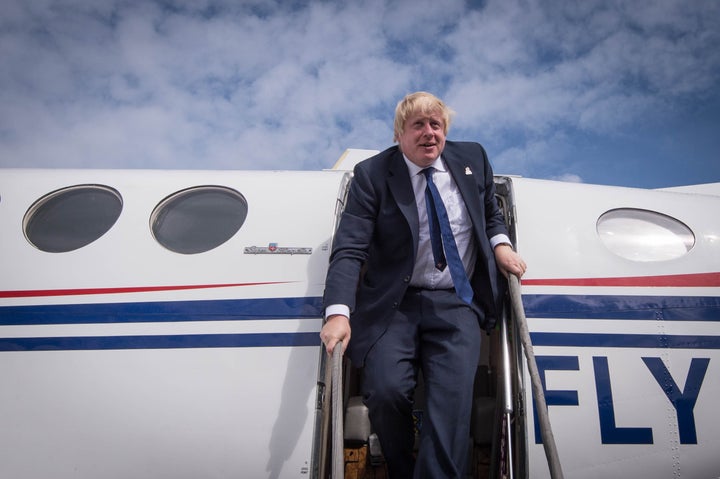
On the final day of campaigning in the EU referendum, the ‘air war’ between the rival In and Out camps became rather literal. Boris Johnson used a private jet and helicopter to hop across the country, while Labour hired a propeller plane to drag a ‘Remain’ message across the skies.
Yet after months of relentless skirmishing in this Battle For Britain, it will ultimately be the ‘ground war’ that will win it. Getting supporters to actually turn out and vote on polling day is the only focus of Leave and Remain from now on.
And without real votes in real ballot boxes, all the media attention and ad campaigns will be like so much hot air lifting a Chinese lantern to drift away on a distant wind.
Like real-world armies, both EU referendum campaigns know that a ground war can only be won with expert reconnaissance, intelligence and logistics, directing well-trained, well-armed troops at the right target.
And more than any election before it, this vote may well be decided by the data and digital teams that make up those reconnaissance and intelligence corps on both sides.
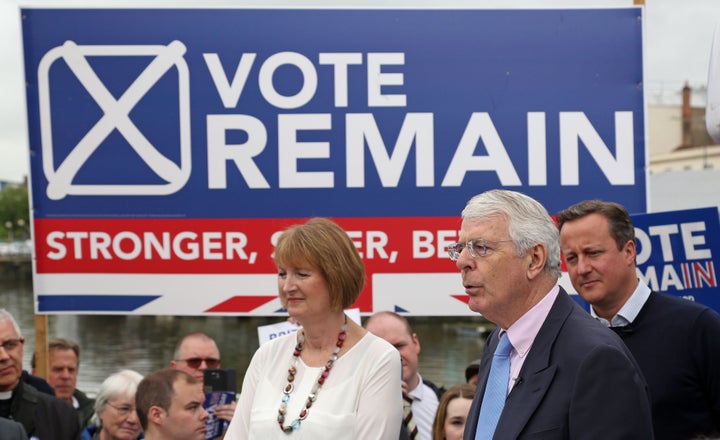
The 2010 election was erroneously called the first ‘digital election’ in the UK. Back then the digital teams were seen as ‘the fun department’, issuing videos, clips, memes, hashtags and so on to a small group of media and online specialists.
But by 2015, digital strategy was embedded in the heart of both Labour and Conservative campaign teams, the key to communications, advertising, fund-raising and - most importantly - identifying voters who could be targeted by canvassers and doorknockers.
Yet different digital approaches led to different outcomes. The Tories were widely seen to have trounced Labour, and the Lib Dems, in the ground war of 2015. Although Labour had its famous ‘four million conversations’ with voters, many of them were not targeted at the right audiences. In contrast, the Tories ran Facebook and YouTube ads that were expertly targeted in key marginals on key voters.
Craig Elder, who with Tom Edmonds ran the Tory digital team, has put it neatly thus: “If you want to spend all day making Vines or managing a pretty Instagram account, great. But if you’re trying to reach a 40-year-old mum of two in Derby North who doesn’t use either platform, you’re wasting your time. You’re much more likely to reach her on Facebook, in the evening, when the kids have gone to bed.”
No surprise then that Edmonds and Elder, two thirtysomethings, had more clout than many older hands in the Tory campaign. They spent £1.2m on Facebook ads, much more than traditional billboard posters. Labour was miles behind, with a tiny £16,000 spent on the platform. The Tories spent just over £300,000 on Google ads, including YouTube pre-roll messages, while Labour spent a few hundred quid.
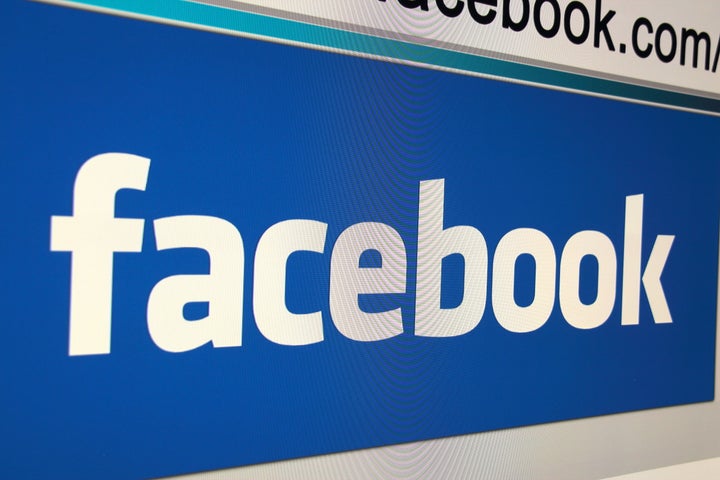
And it’s clear that some social media matters much more than others. An Ipsos/MORI survey from mid-2015 showed just how big the divide was. Facebook was accessed by nearly 60% of women aged 45-54, with up to 86% for younger groups. Crucially, it had high reach across all classes. In contrast, Twitter was accessed by just 11% of women aged 45-54, even among the higher income classes.
David Cameron may have a Twitter account of 1.49m followers but he was right with his two pronouncements on the medium. ‘Too many Tweets make a twat’ proved prescient about political Twitter suicides. And after Milifandom signally failed to shift votes in places like Nuneaton, the PM told last year’s post-election party conference ‘Britain and Twitter are not the same thing’.
Twitter can help shape the media debate, and in turn, generate free publicity in newspapers and on TV and radio for key messages. Yet it is Facebook where the real numbers are for any campaign wanting to targeted ‘reach’.
Fast-forward to the EU referendum campaign and both Leave and Remain are trying to learn the lessons of 2015. One of the most significant hires by the In camp last September was to appoint Edmonds-Elder, the digital consultancy run by the former Tory staffers. The Leave campaign didn’t opt for outside help and instead appointed their own in-house digital team.
Video, of course, is what really motors on Facebook. The Jeremy Clarkson and James May ‘Remain’ video, released at the start of the final week of the campaign, “went bananas” in terms of reach, one insider says. For Vote Leave, their own video contrasting David Cameron’s support for Turkey with a brawl in the Turkish Parliament was seen as having genuine cut-through.
When it comes to the crude metric of ‘likes’ for their Facebook pages, the official campaigns are as neck-and-neck as the polls have seemed of late. Britain Stronger In Europe has 525,000 “likes” on Facebook, just behind 529,000 for Vote Leave.
Yet even these public-facing numbers may be misleading. Neither camp will give away secrets, and only talk off the record, but it’s all about the magical process of targeting the right people within those bigger numbers.
Some in Remain believe they have the edge on this crucial element in the battle. “You get the impression that Leave know that Facebook’s bigger than Twitter, and that segmentation is a thing,” one insider says. “But there’s a lot more to it than that and it’s really hard, precise work. There’s a strong suspicion they are spending a lot of money but not in the right way.”
For their part, some in the Leave campaign claim Remain are wasting cash on outside help, through ad-buying agencies and digital agencies. “We save up to 10-20% by doing it in-house and when you’re talking a budget of £7m that’s a lot of money,” one source said.
Britain Stronger in Europe have the help of Jim Messina, the data king specialist who powered the 2012 Obama and 2015 Tory campaigns. And data sits at the heart of the campaign organisation, allowing it to take a narrower and narrower focus on the voters that matter most as polling day approaches.
Elections come down to persuasion (getting people to make up their mind) and turnout (getting out those who have made up their mind). Leave says its Remain rivals have “given up” on persuasion, whereas they are still focused on winning over new ‘swing’ supporters right to the last minute.
Although there is mutual respect between the staffers in each campaign - not least as many are in the same party - both sides say the other is failing to target properly. Some Outers say that Remain is still holding street-stalls and ‘high visibility’ events that are useful early in a campaign but a waste of resources compared to canvassing in later stages.
A ConservativesIN document, leaked to HuffPost, shows that on June 23 it plans to hold in its ‘Target 90 Seats’ “between 8.00am and 5.00pm, street stall/s in a high footfall locations and alongside main roads etc. Each street stall should have at least six volunteers and be fully branded”. That’s a waste of manpower, its rivals say.
Leavers say their rivals have piled cash into Facebook ads aimed at 18-24 year-olds. “We may be wrong, but no election has yet disproved that younger people are less likely to vote,” says one insider. Curiously, both sides say the other is spending more than them and not targeting as effectively.
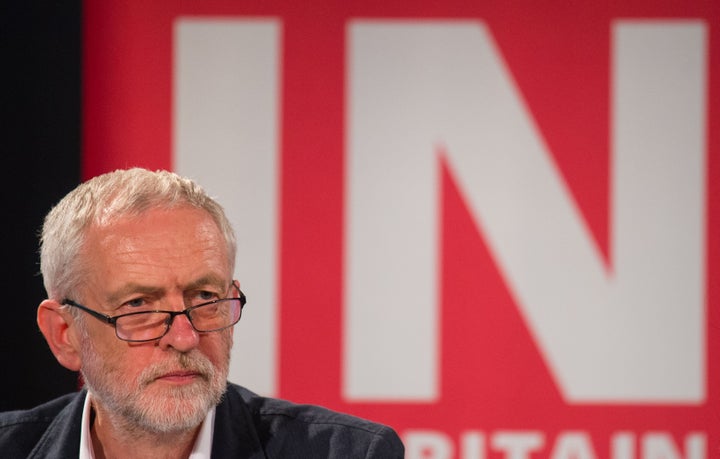
Early in the campaign, just harvesting the data takes up a lot of effort. But as well as printed leaflets asking for supporters’ details, Facebook ads or interactive pages - like a ‘calculator asking people to work out how much they would lose or win personally - can prove invaluable. One ad managed to garner 1.4 million email addresses. The email database then allows the campaign to push supporters up a ‘ladder of engagement’, ranging from donating to sharing messages to the holy grail of actually getting out on the streets - to canvass or knock up voters on the day.
The In campaign has one key advantage in that it can draw on decades of Labour party data on ‘voter ID’. Early on it worked out which Labour voters needed persuading and prioritising. Internal polling shows 70% of Labour voters plan to vote Remain, and 87% of them are ‘certain to vote’. Leave counters that Jeremy Corbyn’s lack of passion for the In cause - even his allies say he's 'Reluctant Remainer' - has left many wavering working class voters unclear about which side Labour is on.
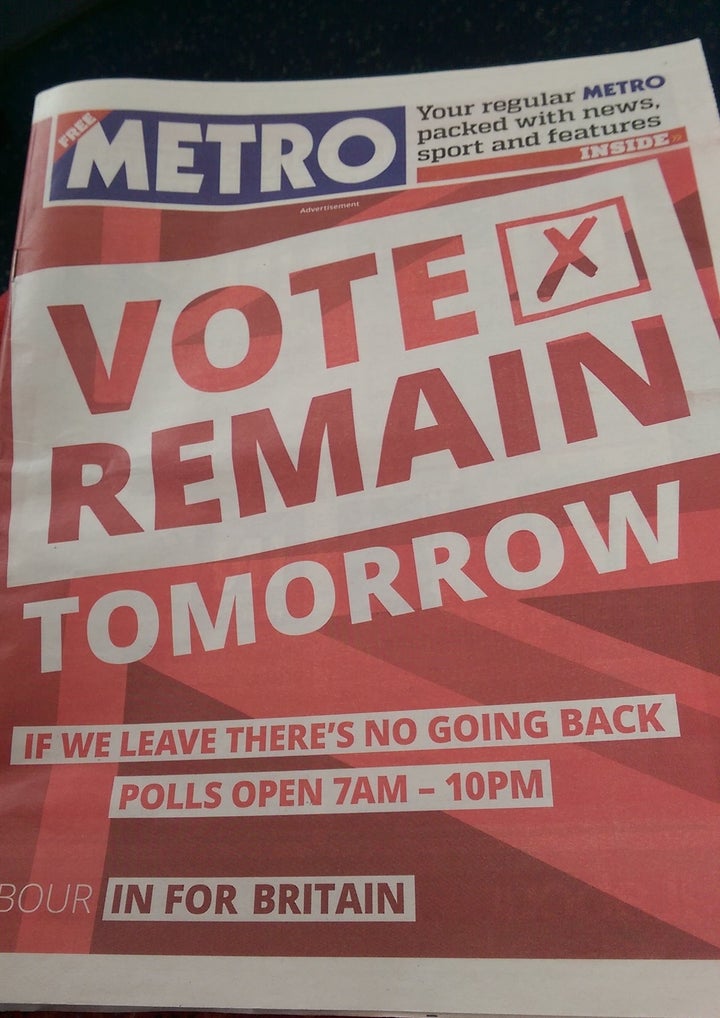
And the picture is patchy in different parts of the country. Some Labour MPs complain that a specific ‘EU question’ was not included in canvassing in many of their heartlands in the May elections. The question was tacked on to the London mayoral canvass, but London is not seen as the problem. In the north and midlands, Labour canvassers were worried they’d upset clear Brexit Labour voters by asking the question.
Other Labour MPs worry that in Tory areas, the fact that the Tory party is so split on Europe could lead to an absence of Conservative activists to ‘Get Out The Vote’ (GOTV, as it’s known in the business). But while many local Tory associations are heavily pro-Leave, and the party’s national voter targeting software has been disabled for the campaign, Remain believes it can still deliver in Tory seats. Labour still has invaluable data in key marginals and safe Tory seats, and members have been boosted by the fact that for the first time ever their local Labour activism can affect the result even in traditional Conservative heartlands.
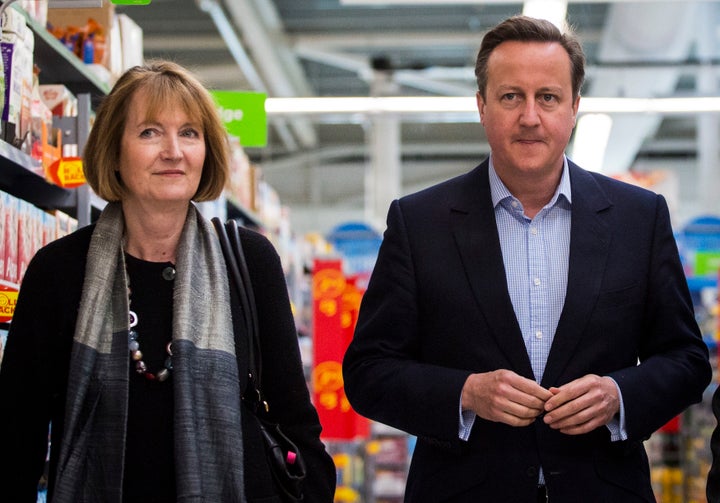
The EU referendum has been similar to the Tory 2015 general election campaign in some ways - not least its use of Facebook, data capture and key messages on the economy. But it is different in that this is not an election about a tiny number of key swing seats, as every vote really does count for once. The scaling-up of the data operation has been therefore important.
Vote Leave had to start its voter ID database from scratch, going through the laborious process of getting each local authority to give their electoral rolls (there is no central electoral roll), then canvassing again and again to refine it. Leave has put all the information into a specially-built VICS (Voter Identification and Contact System) database. Its algorithm hasn’t always been perfect, sending canvassers to the wrong streets early on, but the campaign in confident it is pretty robust now. Every street in the UK is ranked according to how likely they are to vote Remain or Leave.
For both sides the key is not just targeting voters but mobilising them to act. And here there are some fascinating cross-party alliances that have gone into the rival ground armies. Remain say that some of their most interesting recruits have been people who have responded to email or Facebook appeals, but with no previous party background at all.
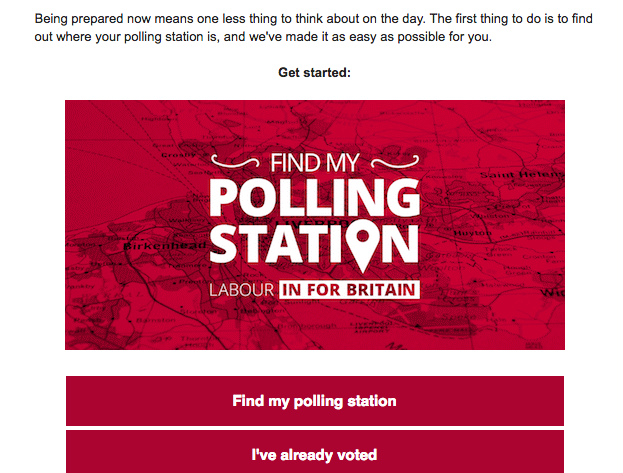
Labour and the Tories and Lib Dems are all working together too in the Stronger In campaign. Stronger In has signed a legal agreement to allow it to ‘piggyback’ on Labour’s national operation and on polling day its HQ will operate from a small room in a London Labour Party office, receiving feedback on where resources need to be targeted through the day.
Labour, which has run its own In campaign, has learned from the Tory 2015 tactics, piling £1m into Facebook and online ads. It remains to be seen just how much impact new members, attracted by Jeremy Corbyn’s election, will have on the ground but Labour has recruited nearly 70 field staff just for the EU referendum - it’s largest ever single recruitment drive.
Print newspapers still matter, but with spending restricted, all the campaigns are spreading the load. Labour has put cash into regional titles, many of which have 'come out' for Remain. Today it paid a six-figure sum, sources say, for the crucial wrap-around advert on Metro, the biggest free paper in the country. This ensured that the cost was not put into the main Britain Stronger in Europe campaign spend. The Democratic Unionist Party (DUP) bought a similar wrap-around advert on Tuesday, ensuring Vote Leave didn't have to foot the bill itself.
For Vote Leave, cross-party working had different challenges. The difficulty early on was a lack of expertise in canvassing among the UKIP members. The ground army didn’t lack bodies, it lacked expertise. Many Tory colleagues have now trained their erstwhile foes into how to canvass properly. Kippers were more used to the ‘street stall’ approach - ‘many of the were used to getting shouted at on the doorstep’, one insider says - but are now on board.
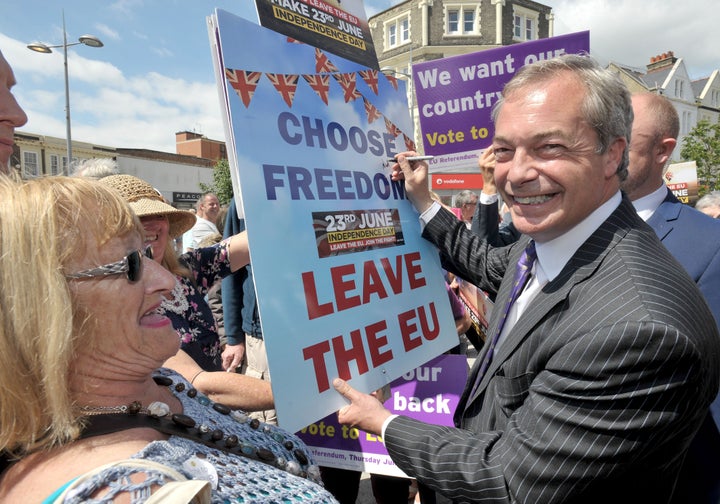
The Tory-UKIP membership mix in Vote Leave is now about 60/40, insiders say. Boris Johnson’s decision to come out for Brexit in February led to a surge in Tory activism, and the official designation of Vote Leave then led to a further surge as Kippers signed up.
The ‘Get Out The Vote’ operation swings into full action today and tomorrow. Even during the BBC Wembley debate, Labour was emailing supporters a special message allowing them to find their local polling station - or to say if they’d voted already by post. Voters who have never been ‘knocked up’ before in the lives, because they lived in safe Labour or Tory seats, will get an email, phone call or knock on the door chivvying them to take that trip to the polling station.
Vote Leave says that recent close opinion polls spell victory because its supporters are more motivated to turn out. And they say there is a ‘directly linear’ relationship between the age people are and how likely they are to vote. Remain can counter that richer people (and ‘ABC1s’ are among its main backers) are more likely to turn out than the poor.
The great irony of this EU referendum is that while it won’t rely on a tiny number of marginal seats, the outcome may still rest on very, very small margins. That’s why the future of the UK’s place in world may well come down to which army won the vital ‘ground war’. And why it may well be digital weaponry wot won it.
